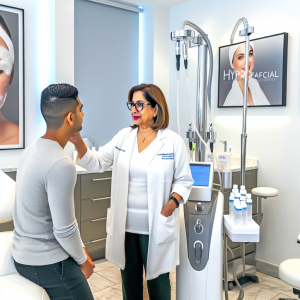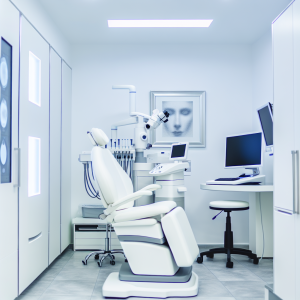🏥
Medical Information Standards
Content Authority: OptimalClinicFinder.com is a comprehensive medical directory platform connecting patients with qualified Botox providers. Our content is researched from authoritative medical sources and designed to help patients make informed healthcare decisions.
How Botox Works: Clinical Mechanism and Applications
Botox belongs to a class of medications called neurotoxins, which work by temporarily blocking nerve signals that cause muscle contractions. When administered by qualified professionals, the medication binds to nerve terminals and prevents the release of acetylcholine, a neurotransmitter responsible for muscle activation. This targeted mechanism creates controlled muscle relaxation that smooths wrinkles and treats various medical conditions.
The medication’s primary mechanism involves several key pathways: selective nerve terminal binding, synaptic vesicle fusion inhibition, and temporary denervation of targeted muscles. This precise approach addresses the underlying muscular causes of dynamic wrinkles, making it particularly effective for expression lines that haven’t responded to topical treatments or other non-invasive interventions.
💡
Did You Know?
Clinical studies show that Botox patients achieve excellent results when combined with professional-grade aftercare products.
Clinical Research and Evidence Base
The clinical development of Botox involved multiple large-scale randomized controlled trials, including the landmark BOTOX Cosmetic studies and medical indication trials. These studies enrolled over 5,000 participants across diverse demographics and followed patients for up to 12 months. The primary endpoint data consistently demonstrated significant improvements in wrinkle severity scores, patient satisfaction ratings, and functional outcomes compared to placebo treatments.
Subgroup analyses revealed that Botox effectiveness extends across different patient populations, including those with varying skin types, ages, and wrinkle severities. The medication showed particular efficacy in patients with moderate to severe glabellar lines, crow’s feet, and forehead wrinkles. Long-term extension studies have confirmed durability of benefits and continued safety over repeated treatment cycles spanning several years.
Treatment Protocols and Clinical Management
Successful Botox treatment requires careful patient selection and individualized treatment planning. The initial evaluation process includes comprehensive facial analysis, medical history review, aesthetic goal assessment, and screening for contraindications. Healthcare providers must assess patient expectations, establish realistic outcomes, and develop comprehensive treatment strategies that may include complementary procedures.
The standard treatment protocol involves precise dosing based on muscle mass, injection site anatomy, and desired outcomes. Most patients receive 20-64 units per treatment session administered every 3-6 months, with specific unit distribution varying by treatment area. Regular monitoring includes assessment of muscle activity, symmetry evaluation, and patient satisfaction scoring to ensure optimal results and minimize complications.
💡
Quick Tip
Botox works best when combined with healthy lifestyle choices for optimal results.
Safety Profile and Risk Management
The safety profile of Botox has been extensively characterized through clinical trials and post-marketing surveillance involving millions of treatments worldwide. The most common adverse events include temporary bruising, mild headache, and injection site reactions, which typically occur within 24-48 hours and resolve spontaneously within days. Healthcare providers can implement strategies to minimize these effects, including proper injection technique, ice application, and pre-treatment preparation.
Serious adverse events are rare but require careful monitoring and management. These include ptosis (eyelid drooping), asymmetry, or distant spread of toxin effect, which occur in less than 1% of patients. Risk factors for serious adverse events include improper injection technique, excessive dosing, or treatment of patients with neuromuscular disorders. Healthcare providers should educate patients about warning signs and establish clear protocols for urgent evaluation when needed.
Botox Sale Near Me: Cost Analysis and Access Considerations
The cost of Botox treatment varies significantly based on geographic location, provider experience, and treatment complexity. Without insurance coverage for cosmetic indications, patients typically pay $10-20 per unit, with total treatment costs ranging from $300-800 per session depending on areas treated. However, many providers offer package deals, membership programs, or seasonal promotions that can reduce per-treatment costs.
⚠️
Safety First
Always consult a qualified medical professional before starting Botox. Results vary by individual.
Insurance coverage for Botox is available for FDA-approved medical indications including chronic migraines, severe underarm sweating, and certain bladder conditions. Most major insurance plans provide coverage for these therapeutic applications, though prior authorization requirements may apply. The prior authorization process typically requires documentation of failed conservative treatments, symptom severity scores, and specialist evaluation.
Provider Selection and Treatment Access
Choosing an experienced healthcare provider is crucial for optimal Botox treatment outcomes and safety. Patients should seek providers with specific expertise in facial anatomy, extensive neurotoxin injection experience, and board certification in relevant specialties such as dermatology, plastic surgery, or facial plastic surgery. Ongoing education about current injection techniques, aesthetic principles, and complication management are important selection criteria.
✓
Why Choose Botox?
●
Clinically proven
●
FDA approved
●
Minimal downtime
●
Long-lasting
Access to quality Botox treatment has improved significantly as more healthcare providers gain specialized training in aesthetic medicine. Many dermatology practices, plastic surgery centers, and medical spas now offer comprehensive Botox services, while some primary care providers have expanded their scope to include basic cosmetic treatments. Patient safety should remain the primary consideration when selecting among available options.
Botox Sale Near Me: Finding Qualified Local Providers
When searching for botox sale near me options, patients should prioritize safety and provider qualifications over pricing considerations. Legitimate Botox providers operate in licensed medical facilities, use FDA-approved products, and maintain proper medical oversight. Warning signs of questionable providers include unusually low prices, non-medical settings, or pressure tactics to purchase multiple treatments upfront.
Reputable providers will offer comprehensive consultations, discuss realistic expectations, and provide detailed information about risks and benefits. They should also maintain proper medical records, follow sterile injection techniques, and have protocols for managing potential complications. Patient reviews, before-and-after photos, and professional credentials can help identify qualified practitioners in your area.
📚 Medical Authorities & Professional Standards
All Botox procedures should be performed by licensed medical professionals following established clinical guidelines and safety protocols.
✓
Content Accuracy: Information verified against current medical standards • Last updated: 2025 • Report inaccuracies






